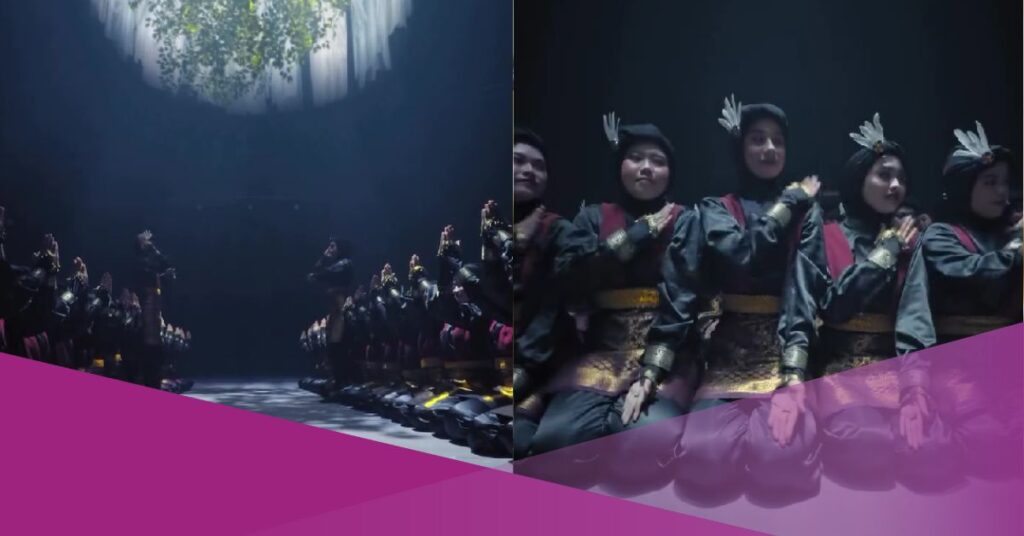
The Ratoh Jaroe dance, a cultural tradition from Nanggroe Aceh Darussalam, Indonesia, has captured international attention through a recent video uploaded on Apple’s official Instagram account (@apple). The 90-second film, recorded using the Apple iPhone 16 Pro Max, highlights the synchronized, rhythmic movements of hundreds of dancers and has received widespread engagement from global audiences.
Commissioned by Apple and titled Music Moves Tradition, the video was produced by Agung Pambudi, founder of Parallel Studio, in collaboration with choreographer Dek Gam, electronic musician Kasimyn (from the duo Modus Operandi), and cinematographer Gatut Subowo. The film blends the structured aesthetics of Ratoh Jaroe, a seated dance involving harmonious hand and body coordination, with modern electronic music, creating what the creators described as a fresh cultural expression.
The Artistic Blend of Tradition and Technology
The dancers are seen wearing black costumes paired with Acehnese songket cloth, performing symmetrical hand swings, coordinated stomps, and seamless formations. The use of the iPhone’s ultra-wide lens and 4K 120fps capabilities enabled the team to capture precise motion and visual detail even under challenging lighting, without interrupting the flow of the performance.
Apple’s video post, shared as a Reel, attracted more than 140,000 likes, 5,773 comments, and 21,100 shares at the time of writing. The creators also used the hashtag #ShotoniPhone, consistent with Apple’s ongoing campaign to showcase creative works produced using their devices.
The Origins and Evolution of Ratoh Jaroe
As reported by Kompas, Ratoh Jaroe was first choreographed in the early 2000s by Yusri Saleh, widely known as Dek Gam, an Acehnese artist who had moved to Jakarta. The term “Ratoh Jaroe” originates from the Acehnese words ratoh (to speak or tell stories) and jaroe (fingers), symbolizing a form of expression conveyed through hand movements.
Dek Gam developed this dance by integrating elements from various traditional Acehnese performances, such as Likok Pulo, Rapai Geleng, Rateb Meuseukat, and Ratoh Duek. His aim was to present an Acehnese seated dance in the capital city and to provide representation for the region’s rich traditions. Prior to his work, seated dances were largely represented only by Rampai Aceh, which lacked accompaniment by traditional instruments such as the rapai.
“The more I worked with Bang Dek Gam, Kasimyn, and Mas Gatut, the more ‘tradition’ started to feel less like the past and more like something alive, shifting, leading us to somewhere new,” said Agung Pambudi, reflecting on the collaborative process.
Impact and Cultural Significance
The creation of Ratoh Jaroe was also a cultural response to the trauma experienced by Aceh following years of conflict and the devastating 2004 tsunami. The dance became a medium for spiritual revival, unity, and cultural identity. This collaboration demonstrates how traditional Indonesian art forms, such as Ratoh Jaroe, can engage with global platforms and technology to achieve wider cultural recognition.
While the video does not explicitly state the iPhone model used in its caption, it features sharp cinematography and professional editing, with production supported by additional tools and post-production carried out on a Mac computer.
Apple’s initiative not only highlights the beauty of Indonesian culture but also underscores the potential of modern technology to preserve and promote traditional art forms. As global audiences continue to engage with the video, it sets a precedent for how cultural traditions can be revitalized and shared through innovative means.







